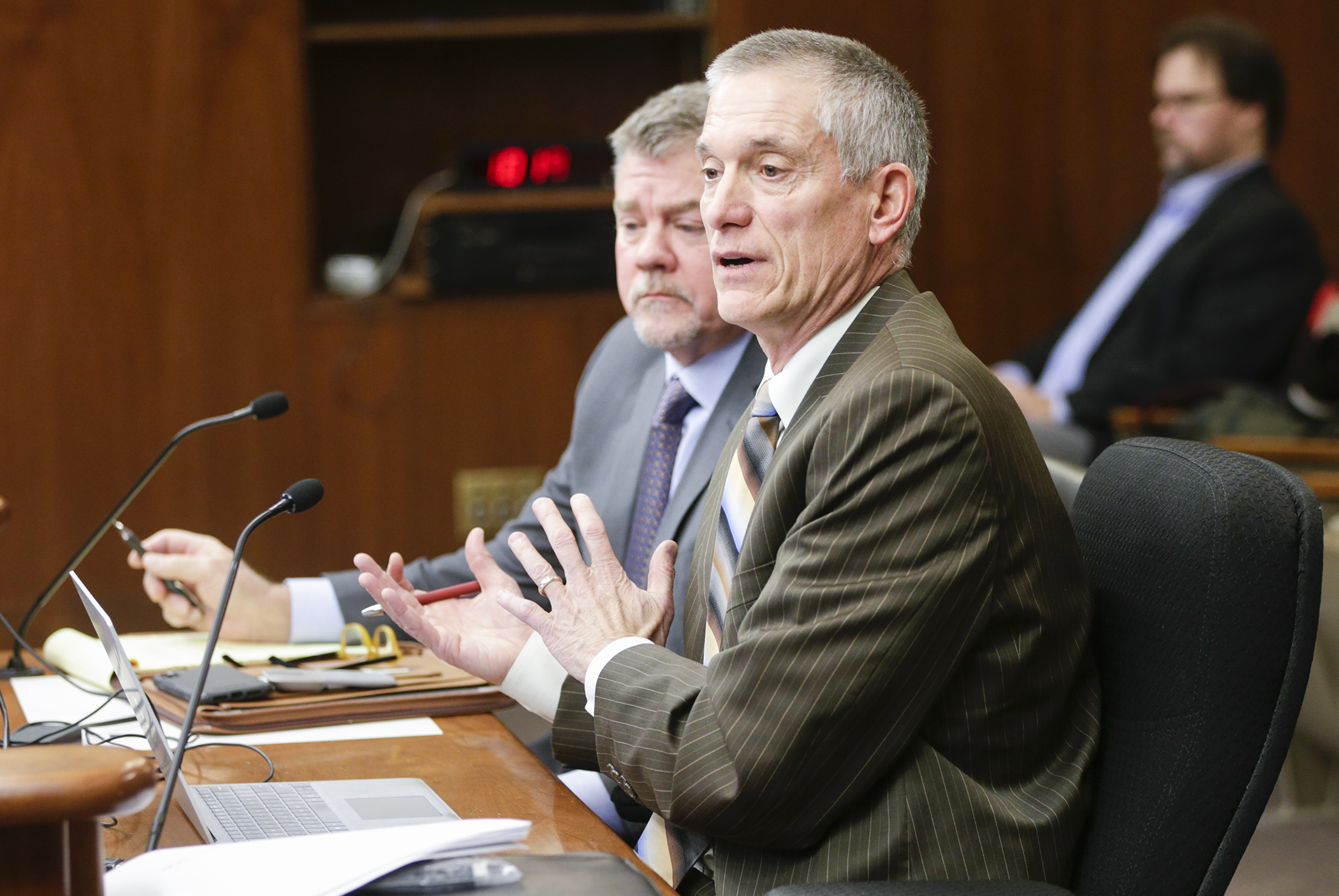Judiciary division hears workload pressures of public defenders

Minnesota’s public defenders are overworked, underpaid, and handle approximately 85 percent of the felony or gross misdemeanor cases moving through state courts.
That assessment came from two officials of the Board of Public Defense who briefed the House Judiciary Finance and Civil Law Division at their first meeting Tuesday.
Public defenders are expected to handle 150 felony cases and 400 misdemeanor cases per year, said Kevin Kajer, chief administrator of the Board of Public Defense. That pressure, plus relatively low salaries compared to salaries for attorneys in private practice, are the biggest factors for a high turnover rate and difficulties in hiring attorneys to maintain staffing levels. A first-year starting salary for a public defender is about $55,000 a year, he said.
“We are turning over about 10 or 11 percent of our staff every year in the last couple of years,” Kajer said.
[WATCH: Full video of Tuesday's House Judiciary Finance and Civil Law Division hearing]
Another major factor contributing to these staffing issues is the way public defenders are treated by the court system, which is under pressure to push cases through as quickly as possible, said State Public Defender William Ward.
Ward noted that an advertisement last year to recruit new attorneys to serve as public defenders in the 8th Judicial District yielded just two applicants. And ads placed in the 5th Judicial District in the last three years yielded none, he said.
The pressures of the job mean that a public defender can spend just 12-14 hours on a felony case and 4-5 hours on a misdemeanor case, said Kajer. Although this workload meets national standards, Kajer noted the standards were established in 1991, and many factors have made practicing law much more complicated now.
Some of those factors include the expanding use of new forensic and other technologies, such as police body cameras and drones, which add a great deal of time that a public defender must spend on many clients.
Kajer noted, for example, that St. Paul police officers began wearing body cameras one year ago, but that has already resulted in more than 22,000 hours of recorded video. To adequately defend a client, Kajer said, public defenders must now spend a larger proportion of their time reviewing such footage.
Ward and Kajer testified on many other changes in society, and the criminal justice system, that have led to increased workloads for public defenders in Minnesota, including:
- more clients with mental health issues (30 percent to 50 percent of jail inmates have a mental illness);
- alcohol/drug abuse and addiction in 80 percent to 90 percent of criminal cases in the state;
- an increased number of electronic/computer crimes being prosecuted; and
-
increased use of DNA, especially in cold cases, resulting in more cases being prosecuted.
Each year, the board handles 150,000 cases on the trial level, 4,700 cases on appeal and 4,700 parole revocation cases. Later this session, the division expects to hear a funding request from the board for the 2019-20 biennium.
Related Articles
Search Session Daily
Advanced Search OptionsPriority Dailies
Ways and Means Committee OKs proposed $512 million supplemental budget on party-line vote
By Mike Cook Meeting more needs or fiscal irresponsibility is one way to sum up the differences among the two parties on a supplemental spending package a year after a $72 billion state budg...
Meeting more needs or fiscal irresponsibility is one way to sum up the differences among the two parties on a supplemental spending package a year after a $72 billion state budg...
Minnesota’s projected budget surplus balloons to $3.7 billion, but fiscal pressure still looms
By Rob Hubbard Just as Minnesota has experienced a warmer winter than usual, so has the state’s budget outlook warmed over the past few months.
On Thursday, Minnesota Management and Budget...
Just as Minnesota has experienced a warmer winter than usual, so has the state’s budget outlook warmed over the past few months.
On Thursday, Minnesota Management and Budget...